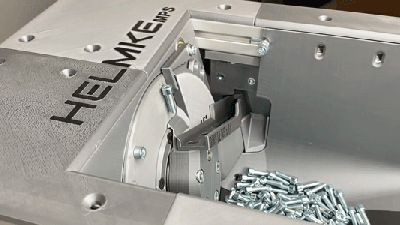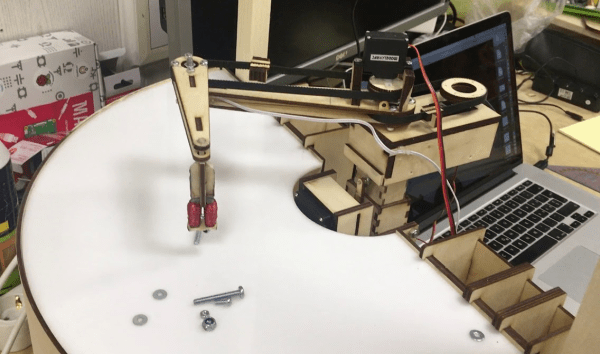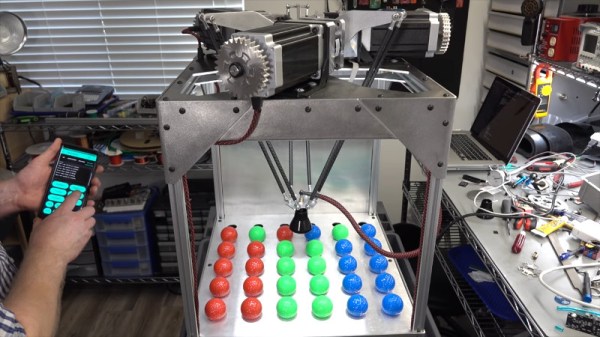Marble machines are a fun and challenging reason to do engineering for the sake of engineering. [Engineezy] adds some color to the theme, building a machine to create 16×16 marble images automatically. (Video embedded below.)
The core problem was devising ways to sort, lift, place, and dump marbles in their correct positions without losing their marbles—figuratively and literally. Starting with color detection, [Engineezy] used an RGB color sensor and Euclidian math to determine each marble’s color. After trying several different mechanical sorting mechanisms, he settled on a solenoid and servo-actuated dump tube to drop the marble into the appropriate hopper.
After sorting, he faced challenges with designing a mechanism to transport marbles from the bottom hoppers to the top of the machine. While paddle wheels seemed promising at first, they tended to jam—a problem solved by innovating with Archimedes screws that move marbles up smoothly without clogs. The marbles are pushed into clear tubes on either side of the machine, providing a clear view of their parade to the top.
Perhaps most ingenious is his use of constant-force springs as a flexible funnel to guide the marbles to a moving slider that drops them into the correct column of the display. When a picture is complete, sliding doors open on the bottom of the columns, dumping the marbles into a chain lift which feeds them into the sorting section. Each of the mechanisms has a mirrored version of the other side, so the left and right halves of the display operate independently.
The final product is slow, satisfying and noisy kinetic testament to [Engineezy]’s perseverance through countless iterations and hiccups.
Marble machines can range from minimalist to ultra-complex musical monstrosities, but never fail to tickle our engineering minds. Continue reading “Automated Pixel Art With Marbles”
















